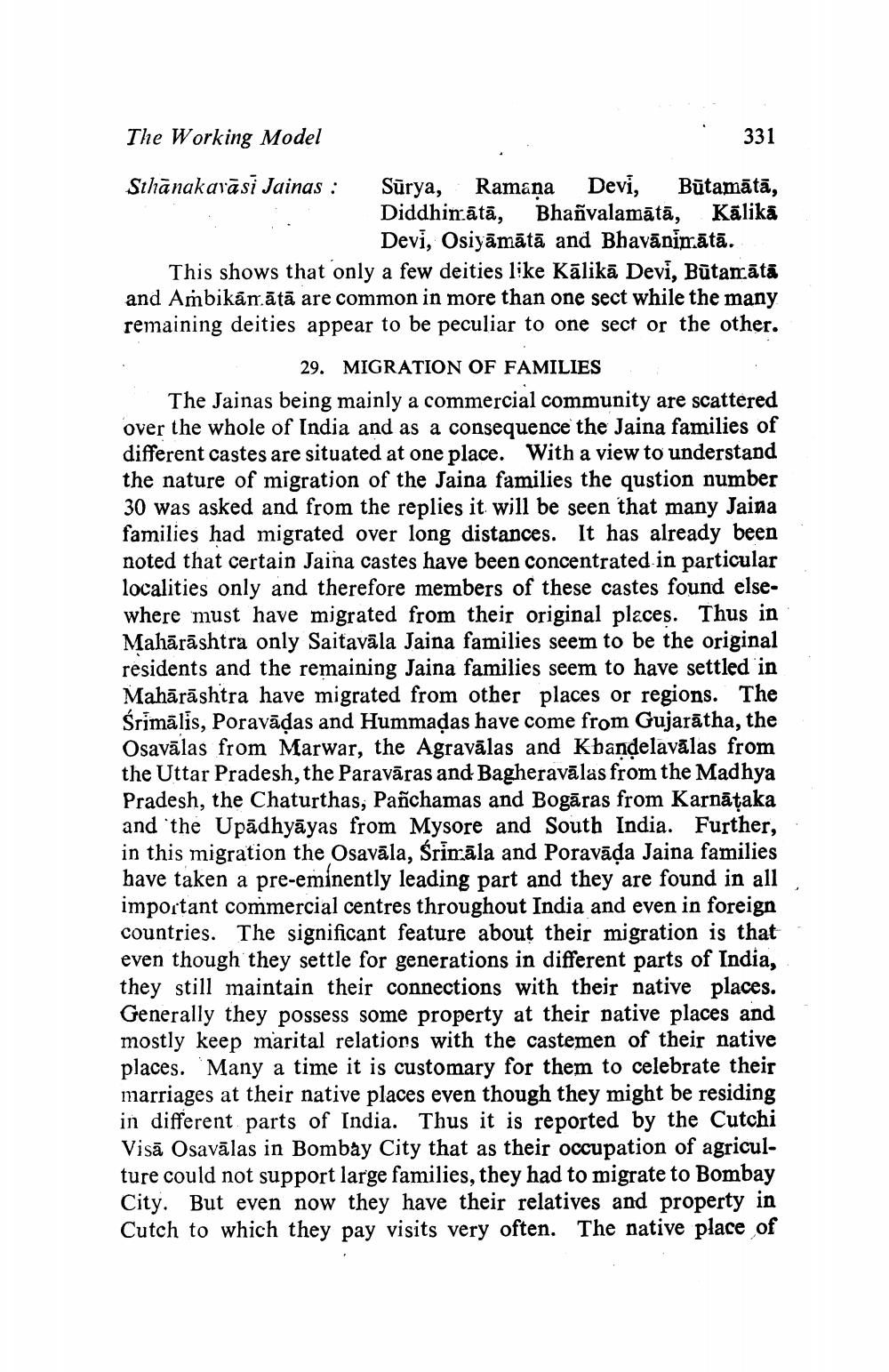________________
The Working Model
.
331
Sthanakarāsi Jainas : Sūrya, Ramana Devi, Būtamātā,
Diddhinātā, Bhañvalamātā, Kālikā
Devi, Osiyāmātā and Bhavāninātā. This shows that only a few deities like Kālikā Devi, Būtamātā and Ambikānātā are common in more than one sect while the many remaining deities appear to be peculiar to one sect or the other.
29. MIGRATION OF FAMILIES The Jainas being mainly a commercial community are scattered over the whole of India and as a consequence the Jaina families of different castes are situated at one place. With a view to understand the nature of migration of the Jaina families the qustion number 30 was asked and from the replies it will be seen that many Jaina families had migrated over long distances. It has already been noted that certain Jaina castes have been concentrated in particular localities only and therefore members of these castes found elsewhere must have migrated from their original places. Thus in Mahārāshtra only Saitavāla Jaina families seem to be the original residents and the remaining Jaina families seem to have settled in Mahārāshtra have migrated from other places or regions. The Śrimālis, Poravādas and Hummadas have come from Gujarātha, the Osavālas from Marwar, the Agravālas and Khandelavālas from the Uttar Pradesh, the Paravāras and Bagheravālas from the Madhya Pradesh, the Chaturthas, Pañchamas and Bogāras from Karnāțaka and the Upādhyāyas from Mysore and South India. Further, in this migration the Osavāla, Śrināla and Poravāļa Jaina families have taken a pre-eminently leading part and they are found in all important commercial centres throughout India and even in foreign countries. The significant feature about their migration is that even though they settle for generations in different parts of India. they still maintain their connections with their native places. Generally they possess some property at their native places and mostly keep marital relations with the castemen of their native places. Many a time it is customary for them to celebrate their marriages at their native places even though they might be residing in different parts of India. Thus it is reported by the Cutchi Visā Osavālas in Bombay City that as their occupation of agriculture could not support large families, they had to migrate to Bombay City. But even now they have their relatives and property in Cutch to which they pay visits very often. The native place of




